Super User
Multidecadal changes in biology influence the variability of the North Atlantic carbon sink
C. Ostle, P. Landschützer M. Edwards, M. Johnson, S. Schmidtko, U. Schuster, A. Watson and C. Robinson (2022). Multidecadal changes in biology influence the variability of the North Atlantic carbon sink. Environmental Research Letters, 17 (11) doi: 10.1088/1748-9326/ac9ecf.
Read the article
EATFISH
EATFISH is a truly multidisciplinary research project aimed at integrating the biological, technical, socio-economic and governance aspects needed for sustainable and profitable aquaculture. Only when these aspects are integrated, competitive aquaculture in a changing seascape will be feasible in Europe. Aquaculture is the fastest growing food sector since the 1970s and its most important purpose is to provide healthy and safe food adapted to consumer preferences. At the same time there are fundamental concerns about the ways we farm and transport food across the world, which are related to negative environmental impacts. Hence, sustainable aquaculture has been identified as the “greatest and most feasible” way to obtain adequate seafood for human consumption and achieve the UN Sustainable Development Goals 2, 4, 13 and 14 on food security, quality education, climate action and use of the oceans, seas and marine resources for sustainable development.
We propose cutting-edge research related to the biology and technical aspects of aquaculture and have a similarly large effort directed towards socio-economic and governance aspects of aquaculture to:
- Optimise resource economy in European aquaculture, such that it contributes to a circular bioeconomy
- Ensure animal health and welfare
- Develop novel aquaculture products targeted to specific market segments
- Refine aquaculture governance to facilitate sustainable development of the sector
- Enhance the skills and competences of future aquaculture professionals
EATFISH is a Marie Skłodowska–Curie Innovative Training Network funded by the EU (project number 956697)
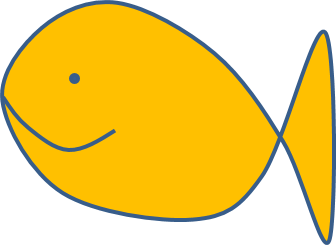
Seaweed, lumpfish and sea urchin will be assessed for their performance in poly-culture in Bantry Bay, SW Ireland, with a particular focus on the culture of echinoderms. Testing criteria will include environmental parameters, growth, food conversion ratio and health and welfare of co-cultured species. The impact of microbial processes in IMTA performance will be assessed in collaboration with Wageningen University. The performance of each system will be compared with previous mono-culture data. The IMTA systems will be evaluated to determine the practicality and applicability of the new infrastructure and species mix chosen. Also, the effect of each of the systems on the environment, the quality and production of the cultured organisms and the time/effort and cost involved will be assessed and compared with the unmodified situation. The successful student will have a background in marine biology/aquaculture and work well in a multidisciplinary team. They should be confident in both analytical lab and running field experiments. Hatchery experience (echinoderm or other shellfish or seaweed) and experience in productivity measurements will be an advantage. The PhD student will be based at BMRS and registered for their PhD at University College Cork. Two secondments are also planned to Wageningen University and the University of Stirling.
Update February 2023
Amalia Krupandan, a Ph.D. student based at the University of Stirling, Scotland, is currently on secondment at BMRS as part of the EATFISH MSCA ITN. Her project will involve developing decision support tools for polyculture management and regulation, with one of her case studies being a salmon-kelp Integrated Multitrophic Aquaculture site in Bantry Bay. During her time at BMRS, Amalia will be collecting water samples and seaweed tissue which will be analysed and used to inform her decision support tools.
Deirdre McElligott
Role: Seaweed Hatchery Manager
Dee holds an MSc in Geographical Information Systems and Remote Sensing and an undergraduate degree in Zoology. Dee spent 5 years working in various marine mammal projects in Australia, including boat-based research on bottlenose dolphins in the renowned Shark Bay in Western Australia and aerial based surveys on all marine megafauna off the northwest waters of Western Australia. Dee has also worked on correlation of seabird and oceanographic variables using satellite data with University College Cork. With over 15 years’ experience in marine research, she has participated in EC FP6 & 7’s, INTERREG and numerous nationally funded projects. Dee is involved in a number of macroalgae based projects, including running trials for growing Asparagopsis armata onshore, and a study, commissioned by the European Commission (EC) to support the European Green Deal, this latter project is a study of Operational Research (OR) to potentially increase shellfish and algae farming and seabed restoration for decreasing the level of harming nutrients (recycling nutrients) and reducing greenhouse gas emission, while not affecting fisheries.
Labels on seafood products in different European countries and their compliance to EU legislation
Paolacci, S., Mendes, R., Klapper, R., Velasco, A., Ramilo-Fernandez, G., Muñoz-Colmenero, M., ... & Sotelo, C. G. (2021). Labels on seafood products in different European countries and their compliance to EU legislation. Marine Policy, 134, 104810.
Read the article
Cultivation of the seaweed Asparagopsis armata in Ireland
Ruminant animals produce significant amounts of methane (CH4). Methane is a potent greenhouse gas (GHG), 28 times more destructive than CO2.
Researchers at Bantry Marine Research Station® (BMRS) are developing methodologies for the cultivation of the red seaweed Asparagopsis armata. This is a pioneering research field. A. armata is a proven powerful anti-methanogen when fed to ruminant animals as a dietary supplement.1,2 Given as a feed supplement, it is better than any other option currently being investigated.
The objective of this research is to develop, refine and optimise the cultivation and harvesting techniques to grow and supply the seaweed so that it can play a significant role in reducing Ireland’s agriculture GHG emissions.
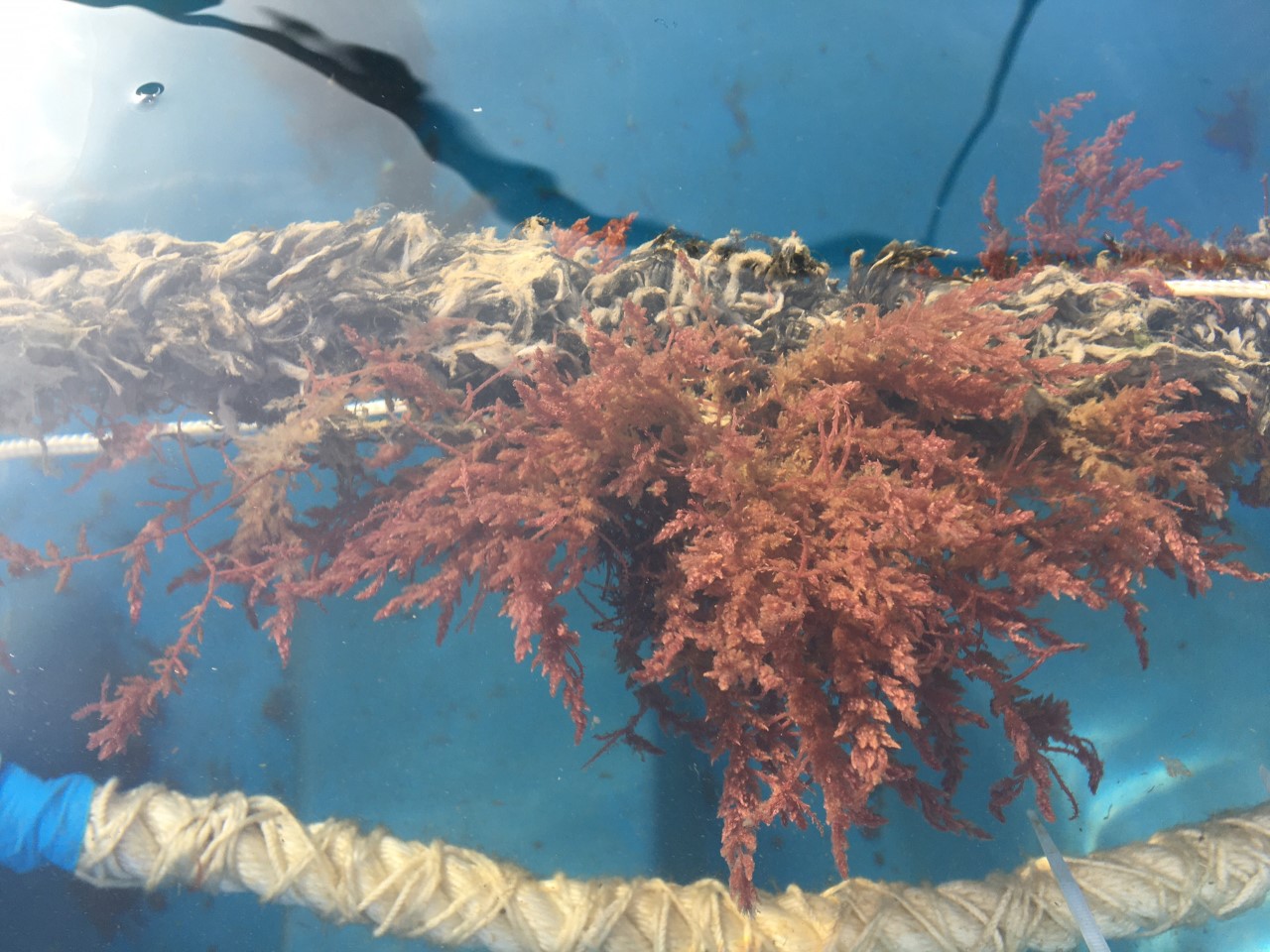 Photo: Adult plant growing in land-based tanks at BMRS
Photo: Adult plant growing in land-based tanks at BMRS
1. Mitigating the carbon footprint and improving productivity of ruminant livestock agriculture using a red seaweed. Robert D. Kinley et al. Journal of Cleaner Production 259(2020)
2. Inclusion of Asparagopsis armata in lactating dairy cows’ diet reduces enteric methane emission by over 50 percent. Journal of Cleaner Production Volume 234, 10 October 2019, Pages 132-138
Milestones Achieved by BMRS
- Asparagopsis armata has a life cycle characterized by a gametophytic and a sporophytic life stage. The induction of sporogenesis in laboratory conditions is a fundamental step to enable a mass production of the seaweed. BMRS has achieved sporogenesis induction and it is currently scaling up the system in order to produce large quantities of spores, which will enable seaweed producers to grow the seaweed.
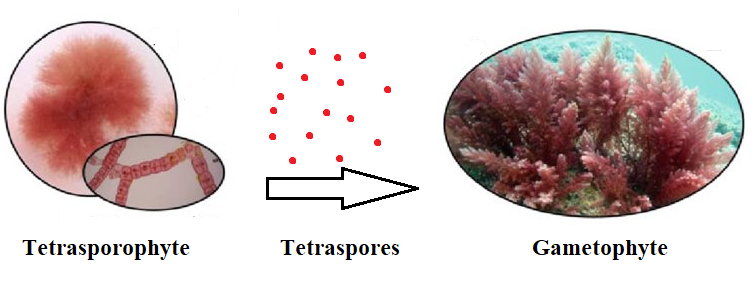
- BMRS has also developed methodologies for the cultivation, both nearshore and land-based, of the two life stages of this seaweed.
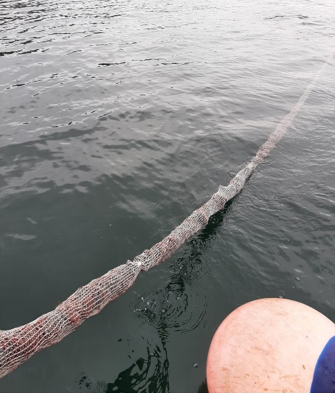
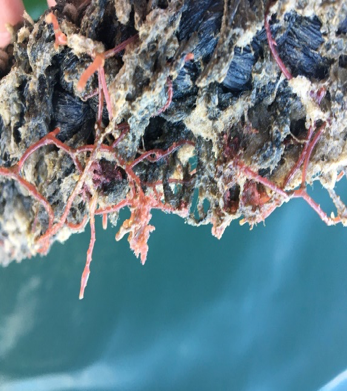
- BMRS has years of experience in seaweed farming and it has established a hatchery for the cultivation of several species of kelp found in the North Atlantic.
- BMRS has also developed analytical methods to characterise the chemical profiles of the seaweeds and methodologies for the extraction of interesting bio-compounds.
Future Goals
- Establish a hatchery for the cultivation of A. armata
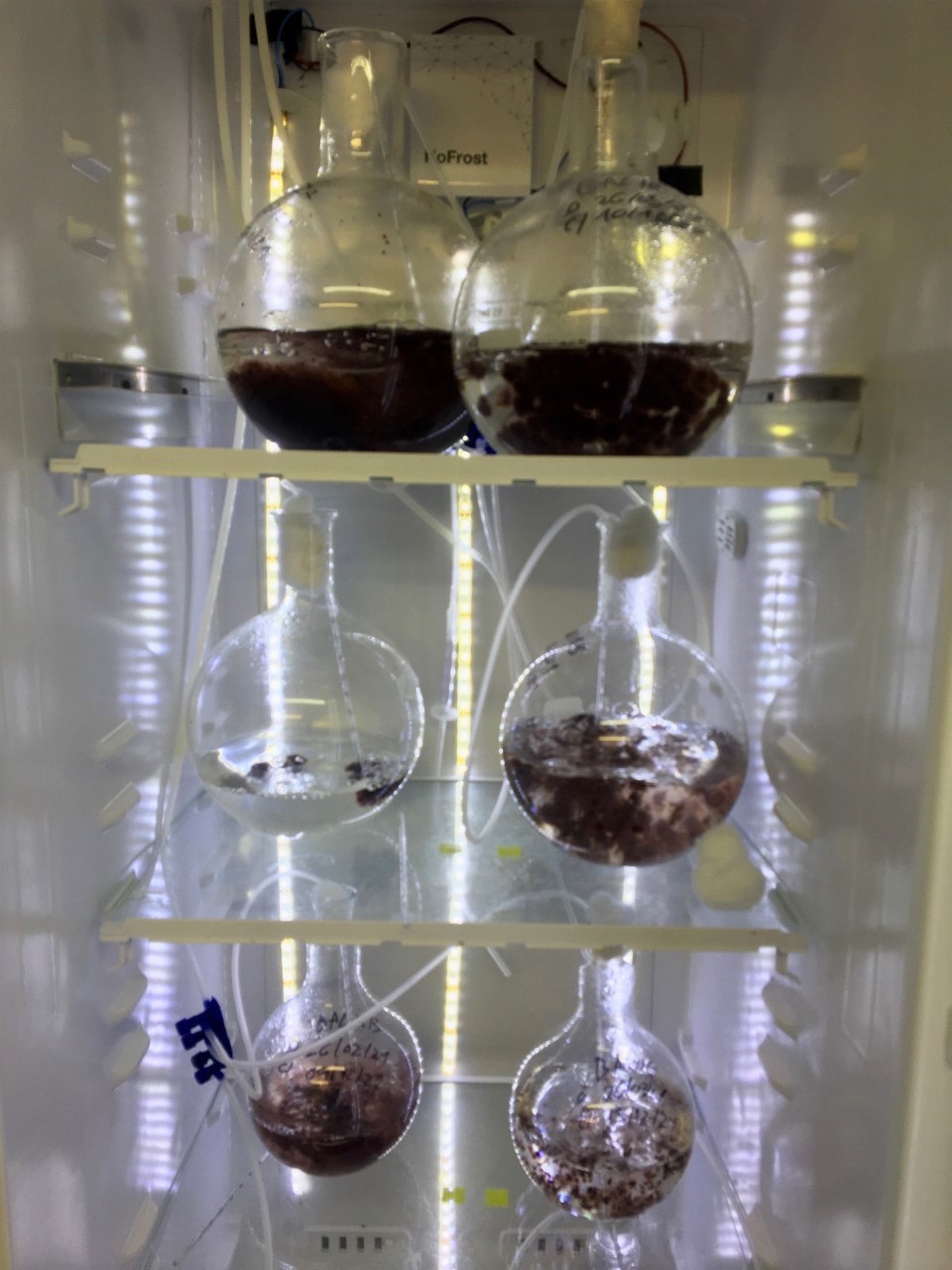
- Evolution of the methodology for the development of the spores on ropes for deployment nearshore.
- Evaluation of the benefits of seaweed cultivation in term of marine ecosystem and carbon sequestration.
- Identification of marine sites for nearshore cultivation with characteristics that optimise productivity.
- BMRS will support Teagasc in feed trials to test the effect of A. armata on ruminants and their emissions.
Insights from an Innovative Regional-to-National Scale Academic-Led Knowledge-to-Impact Network and Recommendations for Future Initiatives, Coastal Management
M.T. Johnson, L.J. Johnson, G.A. Bayliss-Brown, V. Danino, S. Day, I. Dunnett, J. Forster, I. Lorenzoni, K. Kennedy, G. Malin, K. Moore, P. Moore Fuller, M. Walton & T.J. Tolhurst (2020) The Marine Knowledge Exchange Network: Insights from an Innovative Regional-to-National Scale Academic-Led Knowledge-to-Impact Network and Recommendations for Future Initiatives, Coastal Management, DOI: 10.1080/08920753.2020.1781513
Read the article
AquaTech4Feed
AquaTech4Feed will develop a novel sustainable aquaculture production process based on the production of proteinaceous and high nutritional value feed utilizing aquaculture waste-streams from Recirculating Aquaculture System (RAS). The aim will be to improve fish production and final product quality by novel fish feed from alternative biomass sources, such as algae, duckweed, microbiomes (bioflocs), and insects. The production process will consist of a closed recirculation system for nutrients and water recycling targeting to improved biosafety. Conventional and new technologies and methods will be applied to ensure novel feeds safety and new production processes will be proposed. The project includes feeding trials with lumpfish, salmon and sea bream in order to assess fish production and define production and quality benchmarks.
BMRS’s role is two-fold, we will be involved in the production of the macro-algae and conduct the feeding trials (on salmon and lumpfish using the novel feed produced.
Update June 2020
Update September 2020
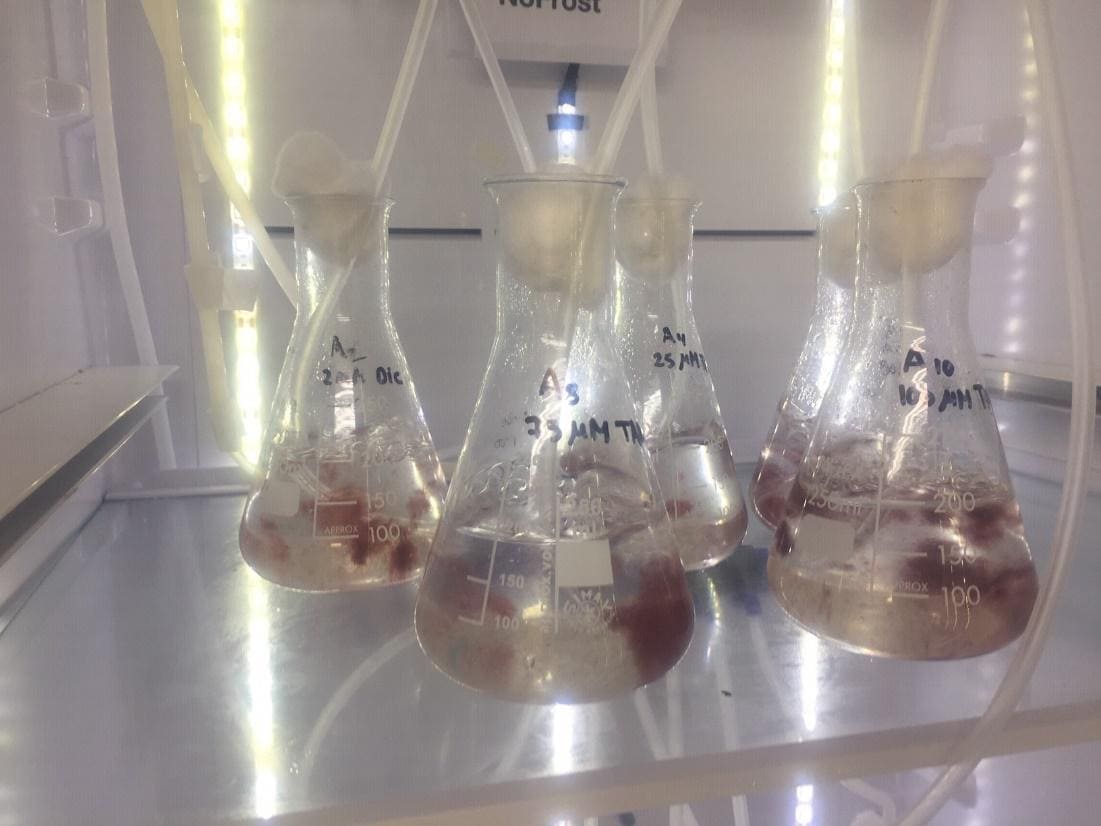 Trial 1: growth performance of Falkenbergia rufolanosa at different TAN concentrations.
Trial 1: growth performance of Falkenbergia rufolanosa at different TAN concentrations.
Carbon on the Northwest European Shelf: Contemporary Budget and Future Influences
Oliver Legge, Martin Johnson, Natalie Hicks, Tim Jickells, Markus Diesing, John Aldridge, Julian Andrews, Yuri Artioli, Dorothee C. E. Bakker, Michael T. Burrows, Nealy Carr, Gemma Cripps, Stacey L. Felgate, Liam Fernand, Naomi Greenwood, Susan Hartman, Silke Kröger, Gennadi Lessin, Claire Mahaffey, Daniel J. Mayor, Ruth Parker, Ana M. Queirós, Jamie D. Shutler, Tiago Silva, Henrik Stahl, Jonathan Tinker, Graham J. C. Underwood, Johan Van Der Molen, Sarah Wakelin, Keith Weston and Phillip Williamson, March 2020. Carbon on the Northwest European Shelf: Contemporary Budget and Future Influences, Frontiers in Marine Science
Read the article.
LIFE Farm4More – LIFE H2020
LIFE Farm4More - Future Agricultural Management for multiple outputs on climate and rural development
Life Farm4More aims to reduce GHG emissions in the agriculture sector by:
- Creating and characterization of low emissions animal feeds from biorefinery products:
- organic/non-organic grass-legumes press-cakes with/without biochar;
- protein derived ingredients - crude protein (CP); hydrolysed protein; amino acid (AA) and polypeptides (PP) concentrates;
- Testing the new biorefinery sourced feeds in animal trials (cattle, pig and poultry)
- Screening for additional non-feed applications for the generated biorefinery products
- Screening and assessing alternative feed input substrates (ensiled seaweed)
- Assessing economic feasibility
- Establishing and managing a member state/stakeholder group (Ireland, Austria, Denmark) geospecific biorefinery implementation.
- Preparing specific dissemination material for agricultural- and policy level-actors
BMRS role
To optimise seaweed preservation methods by reducing its currently Global Warming Potential (GWP).
Drying seaweeds is the most common preservation method, but it is labour intensive and has a greater Global Warming Potential (GWP) than grass silage. BMRS will replace drying by a novel ensiling process. The new ensiling process will ensure that its nutritional- and monetary-value is maintained, while producing a bi-product, that possesses similar chemical characteristics to that of grass-silage press juice. The seaweed-silage press juice will be fed to the biorefinery as an alternative input substrate whereby its GHG reductions in relation to current seaweed-production techniques will be identified.
Update April 2020
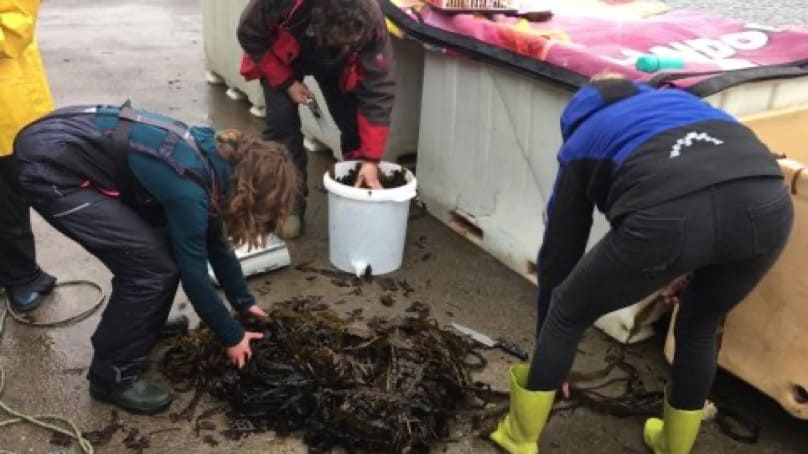 Chopping Alaria for sample buckets and bags for trial 2
Chopping Alaria for sample buckets and bags for trial 2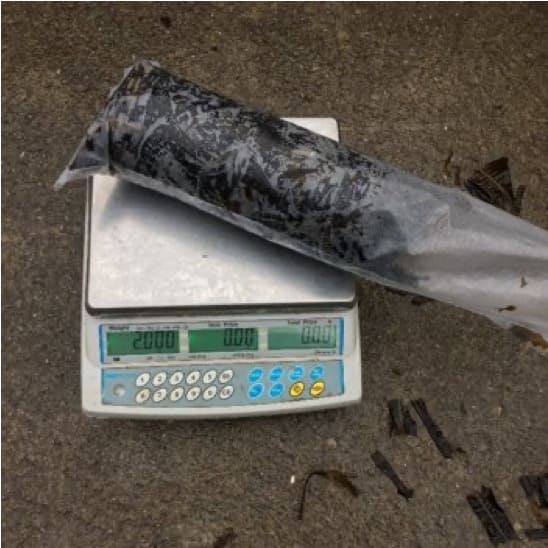 Vacuum sealed bags before being sealed
Vacuum sealed bags before being sealed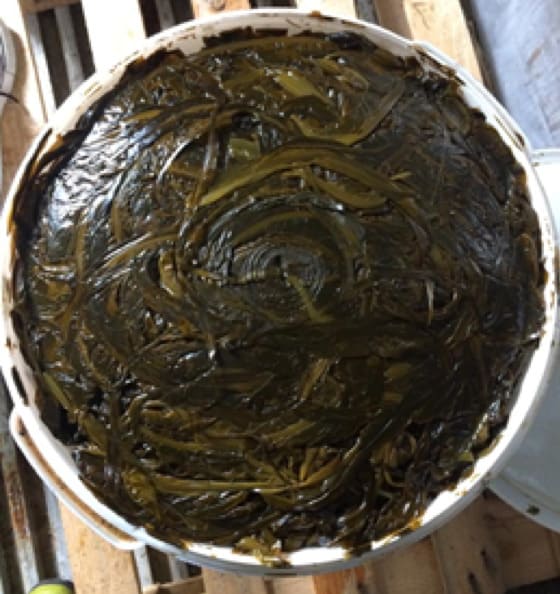 Alaria silage in fermentation bucket 23 days post-harvest from Trial 1
Alaria silage in fermentation bucket 23 days post-harvest from Trial 1
Update September 2023
LIFE Farm4More are attempting to reduce GHG emissions in agriculture by transforming seaweed into protein-rich green biorefinery feedstock.
AgRefine – H2020
The project will involve investigating a novel seaweed-ensiling process as an alternative to drying to preserve seaweeds nutritional and monetary value. The study will also investigate the waste effluent produced by the silage. Seaweed cultivation optimisation strategies will be studied with the aim of maximising seaweed protein and/or mannitol content.
Update September 2020
AgRefine is a Disruptive Innovative Cooperative Entrepreneurial (DICE) education, training and skills development programme rolling out the next generation of Agri Biorefinery and Valorisation Bioeconomy leaders. This project consists of 15 highly interdisciplinary and inter-sectoral PhD projects, each specialising in specific aspects of the bioeconomy.
AgRefine, a European Training Network (ETN), will train 15 Early Stage Researchers (ESRs) in the necessary skills and knowledge to position Europe as the global leader in developing an agri-bioeconomy industry based on the advanced biorefinery technologies.
Aim:
Its overall aim is to address the shortcomings and overcome the weaknesses that current stand-alone AD and biorefinery technologies possess.
BMRS Role:
BMRS will host ESR 7 (Priya Pollard) who will investigate a novel seaweed-ensiling process as an alternative to drying to preserve seaweeds nutritional and monetary value. The study will also investigate the waste effluent produced by the silage. Seaweed cultivation optimisation strategies will be studied with the aim of maximising seaweed protein and/or mannitol content.
BMRS will also provide ESR’s 3 (Eleftheria Papadopoulou), 5 & 8 (Mariana Cerca) with industry experience over their secondments.
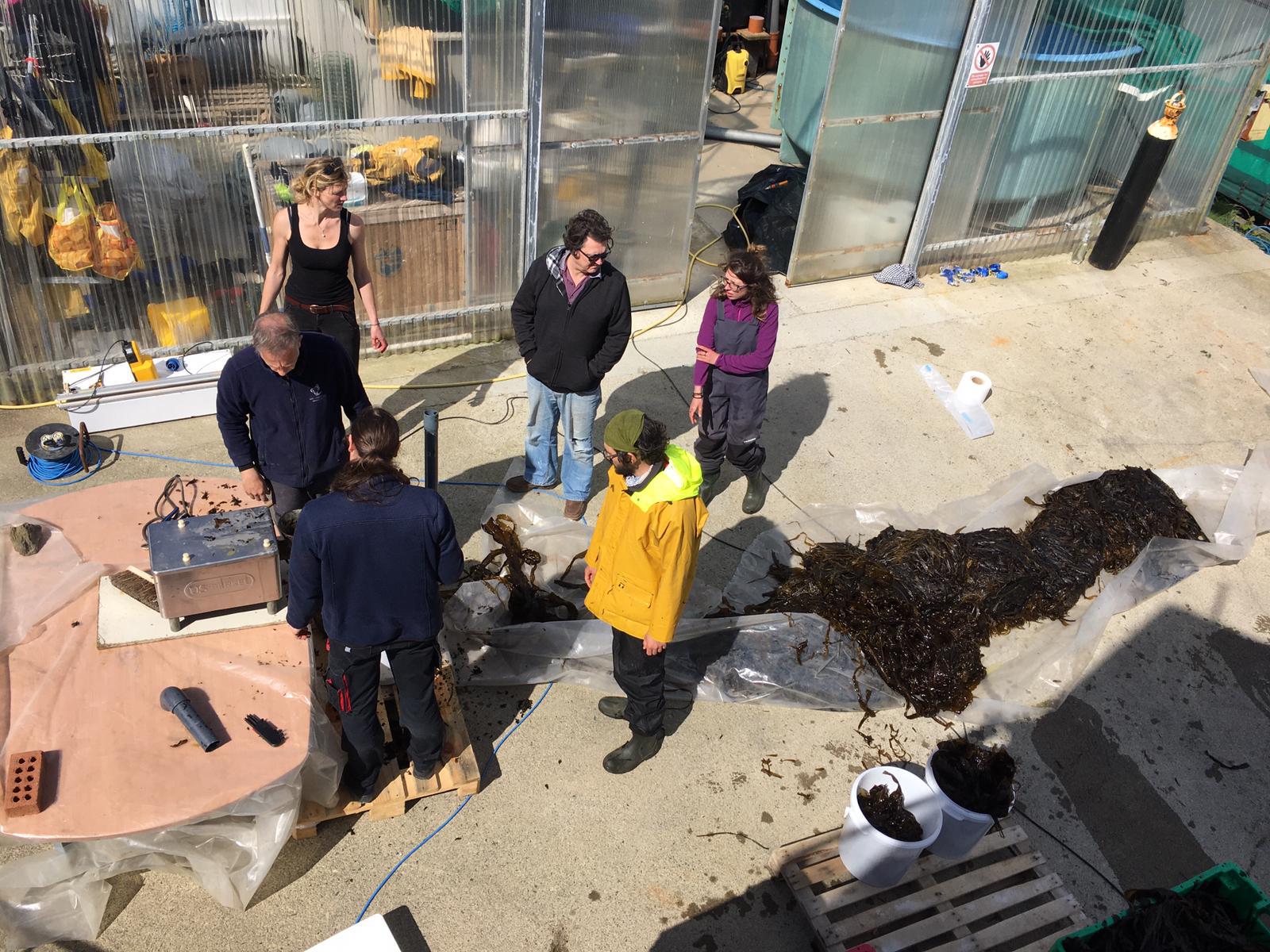 Seaweed being prepped for ensilage
Seaweed being prepped for ensilage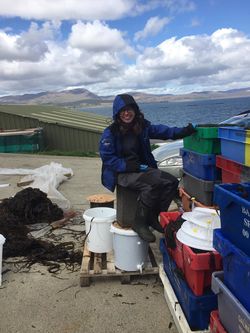 Seaweed being compacted into buckets for ensilage.
Seaweed being compacted into buckets for ensilage.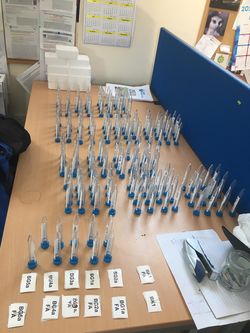 Collection tubes labelled and ready for leachate collection
Collection tubes labelled and ready for leachate collection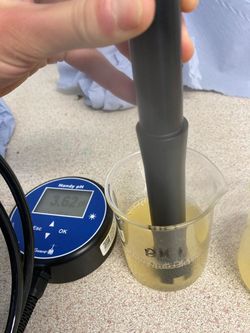 pH of Leachates being monitored on day 21 of ensilage.
pH of Leachates being monitored on day 21 of ensilage.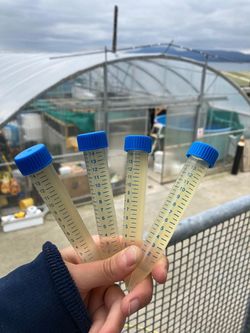 Leachate collected and stored for further analysis.
Leachate collected and stored for further analysis.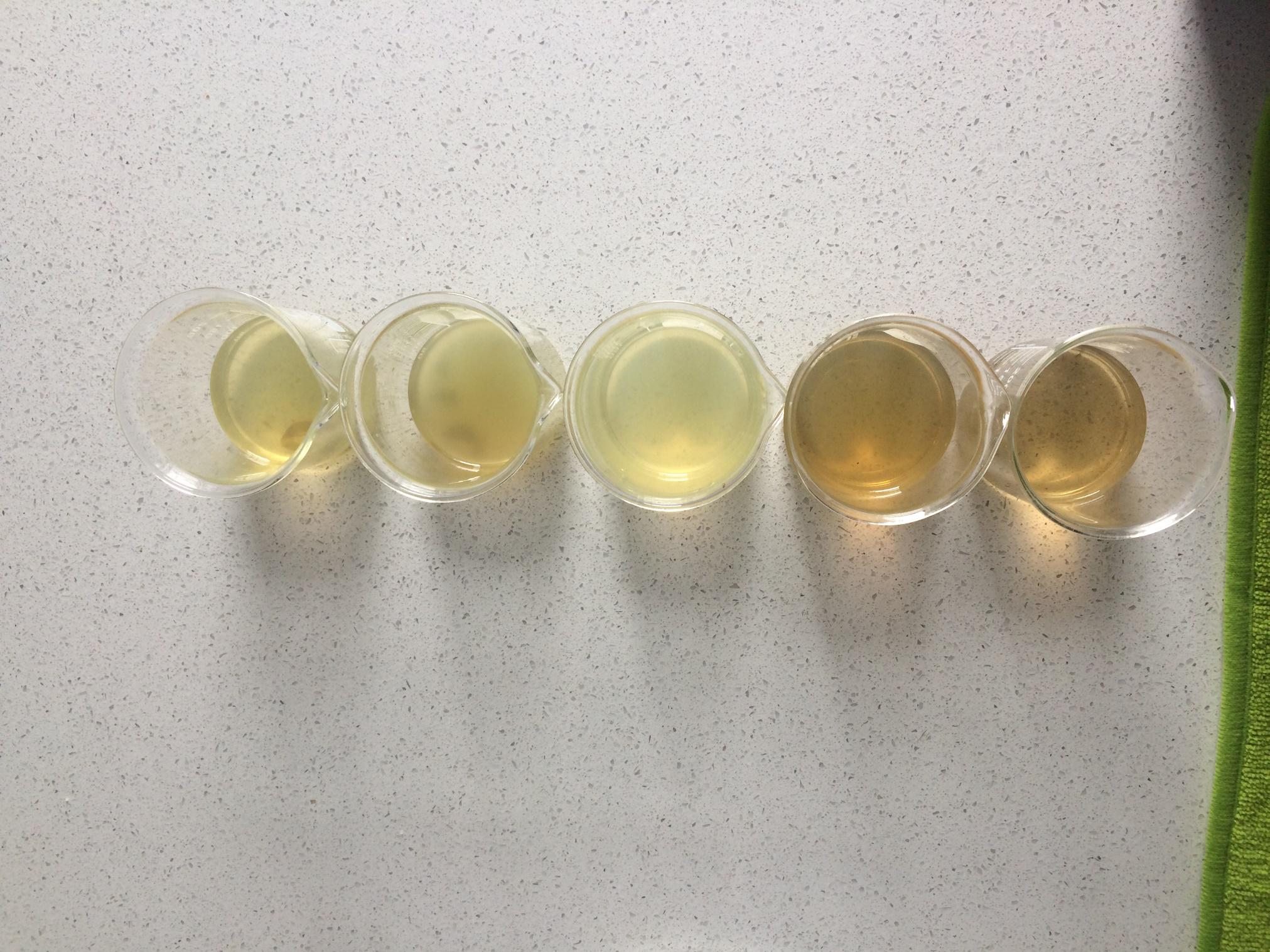 Leachates collected from buckets on day 90 of ensilage.
Leachates collected from buckets on day 90 of ensilage.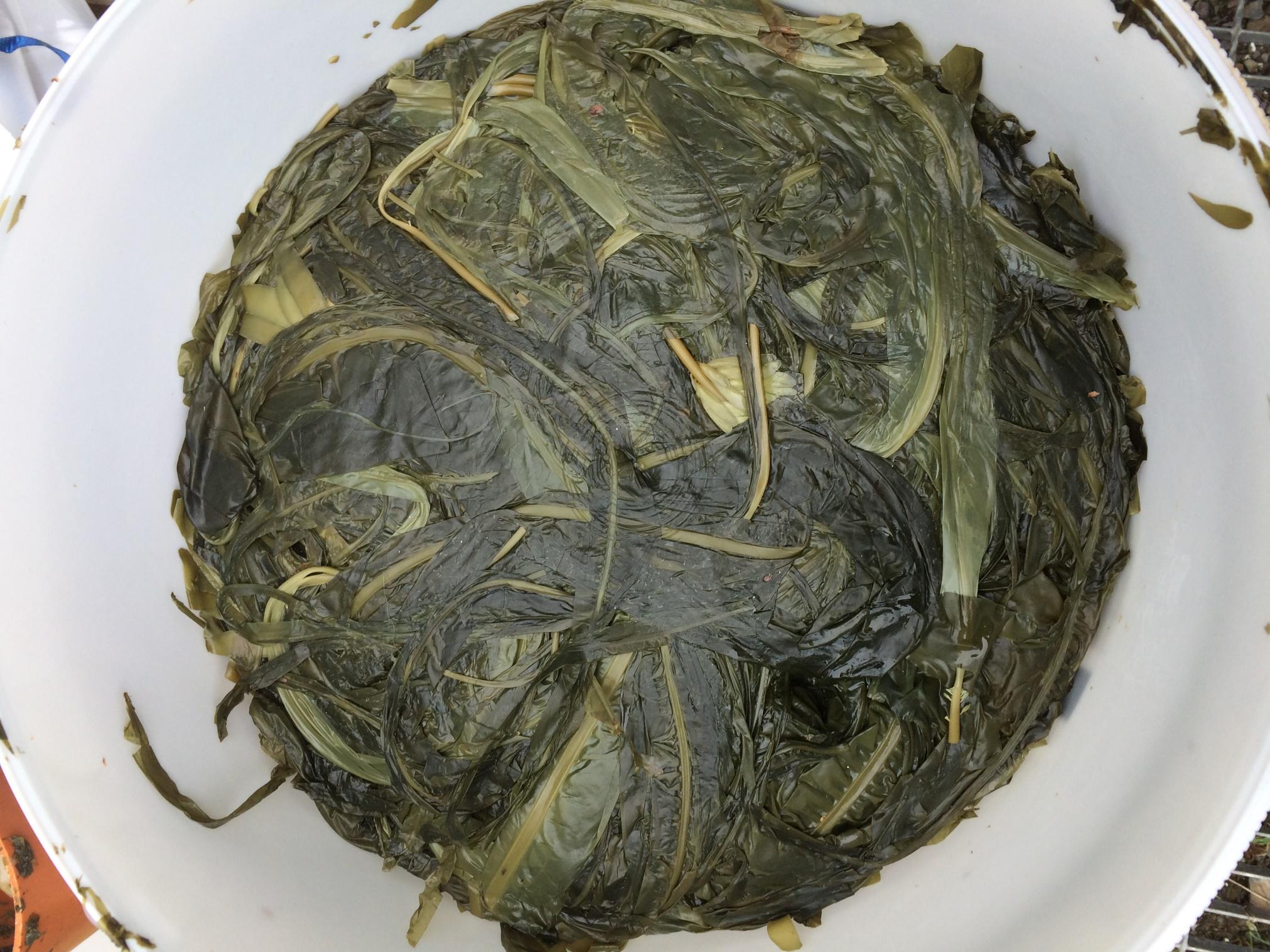 Bucket Day 90 of ensilage.
Bucket Day 90 of ensilage.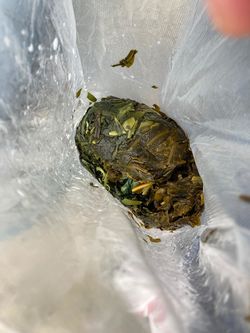 Bags day 90 of ensilage
Bags day 90 of ensilage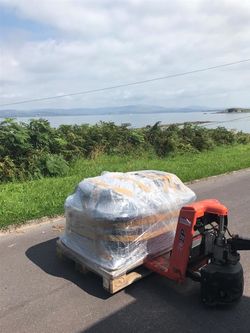 Ensiled seaweed and leachate being shipped off to the Technical University of Denmark (DTU) for down-stream processing.
Ensiled seaweed and leachate being shipped off to the Technical University of Denmark (DTU) for down-stream processing.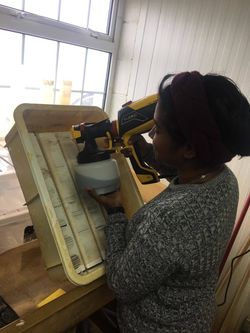 Spraying collectors with Alaria esculenta gametophytes.
Spraying collectors with Alaria esculenta gametophytes.
Small scale silage optimization tests have begun on select kelp species.
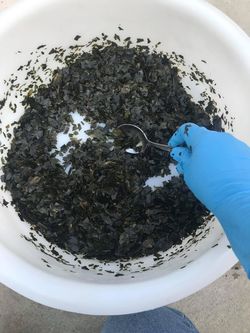 Homogenising kelp with additives before ensilage.
Homogenising kelp with additives before ensilage.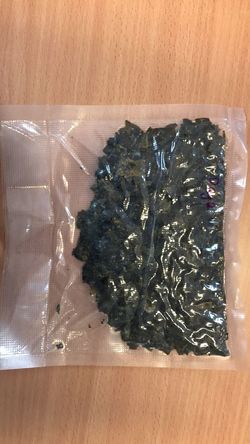 Kelp in vacuum sealed bag on day zero of ensilage.
Kelp in vacuum sealed bag on day zero of ensilage.


